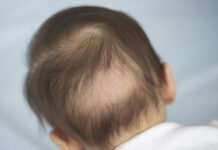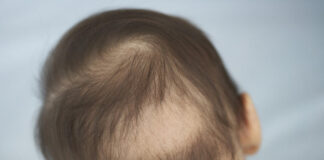It’s particularly amazing when the doctor brings you a squeaking tiny toy-like infant wrapped in blankets. You grin as you glance down at the weeping but adorable baby, expecting a similar show of recognition from them – perhaps just a small smile? Even if a baby’s smile is more of a reflex, the joy it brings to a parent is unimaginable. But what if that smile reveals a pair of loosely hanging teeth? Baby Born With Teeth: What will be your reaction? Of course, a barrage of questions will invade your mind. Why does my newborn have teeth? What could this imply? Is this okay? Does the baby need immediate medical help? What should I do? Is my baby a vampire (I’m kidding!)?
Do not worry. As usual, we have done the research to answer all your Why, What, and How questions in this piece of writing.
Parents begin preparations for their baby’s teething period way ahead of time. Before the teething stage begins, they carry out thorough research on;
- The type of foods the baby should be given
- The hygienic needs of their baby’s tiny mouths
- Any complications during the stage.
- The safest toys for their frequent desire to bite and chew
But what if your infant goes against all the baby teeth charts and you actually have a baby born with teeth?
Is it possible to have a baby born with teeth?
Yes, it’s conceivable, but it’s quite rare. However, the scenario is not as frightening as you may believe. No, you will never get a baby who smiles wide and has a full set of beautiful white teeth when they are born. The baby isn’t like those in horror movies, and it’s not a descendent of Twilight’s Edward and Bella. There is just 1 case in about two deliveries in which there is a baby born with teeth. These are usually referred to as Natal teeth.
What are Natal Teeth?
These are the teeth that are visible in a baby’s mouth immediately after birth. They are usually merely a couple of weakly held teeth that haven’t fully developed. The frequency of these incidents varies by racial group. They are particularly noticeable in American Indians. It’s worth noting that natal teeth differ from Neonatal teeth, which appear within the first 30 days of a baby’s existence.
Properties of Natal Teeth
Although they might appear like regular teeth, Natal teeth are usually underdeveloped with the following characteristics:
- Cone-shaped
- Yellowish-brown color
- Weaker roots
- Might have pointed edges
- They can be wobbly at times
Causes of a baby born with teeth
Many research have been undertaken, and numerous theories have been proposed to explain why a baby is born with teeth. However, none has been able to present a concrete factual medical reason behind it.
Nevertheless, a few suspected cases of the condition may include:
- A family history of Natal teeth.
- Tooth germ cells are positioned too close to the gum’s surface.
A few medical conditions may also be associated with natal teeth;
- Hallermann-Streiff syndrome
- pachyonychia congenita
- Cleft lip and palate
- Sotos syndrome, etc
According to a typical baby teeth chart, milk teeth should start appearing after the sixth month, or the earliest could be around four months. And parents often panic when they realize their baby is born with teeth.
But many parents are uncertain about the right course of action to be taken if their baby is born with teeth.
Are Natal Teeth hazardous?
Even though the situation of a baby born with teeth may require special attention, it is not as dangerous or alarming as you might think it to be. There is no rocket science behind Natal teeth. These are just normal milk teeth that have appeared before their time. If they are not too loose, they might not even need any medical correction. However, these might cause a few problems in some cases.
They include;
- Loose teeth may fall off, and the infant might swallow or choke on them. In such a case, seek immediate medical help.
- A baby might develop traumatic lingual ulceration, whereby the sharp ends of the teeth injure the tongue.
- An injured tongue may cause discomfort and pain during feeding sessions.
- The sharp-ended teeth may irritate the mother’s breast.
- A possibility of developing dental caries
So as a parent, you need to check whether the natal teeth are too sharp, too loose, or causing any type of irritation to the baby.
Steps to Take when you have a baby born with teeth
As mentioned earlier, the situation does not require any immediate medical action unless the teeth pose a health hazard. These might be part of your baby’s primary teeth and should be preserved if possible.
It would be a good idea to seek a pediatric dentist’s help for the possible diagnosis of supernumerary teeth. These are extra teeth apart from the standard set of twenty and may cause crowding and improper development of the actual milk/primary teeth.
Whatsoever the case may be, the following steps should be considered for the care of a baby born with teeth;
- Perform an early X-ray to see whether the teeth are primary or supernumerary.
- Check whether the teeth are too loose and if there is a risk of them being inhaled.
- Monitor the baby for signs of discomfort.
- Gently assess the baby’s tongue for signs of injury or any discomfort/pain while feeding.
- Seek a pediatric dentist’s advice on whether the teeth need to be removed.
- The dentist might either recommend that the teeth need to be removed or left in place.
- If the teeth are left in place, the dentist might suggest smoothening out the edges to avoid ulcerations.
- This can be done by either grinding the edges or using a composite resin to form a dome shape over the edge.
- Contrarily, a dentist may suggest removal, which can be performed by the use of an anesthetic cream.
Having said all these, your mind should be at peace now as a parent. Now you know exactly what natal teeth are and the course of action to treat them. If you are a new parent and feel lost about taking care of an infant, you might enjoy reading The Things a New Parents Should Know. Until next time, take care





